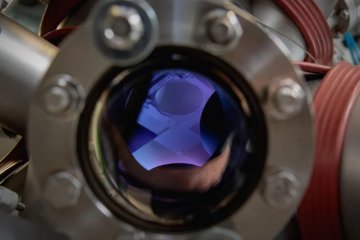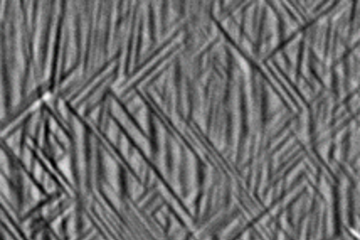All genres
141.
Journal Article
Adsorption of Methoxysilanes on an Iron Surface and Corrosive Behavior of Formed Surfaces in a Corrosive Environment. Protection of Metals 30, 1, pp. 52 - 58 (1994)
142.
Journal Article
Synthesis and Properties of Thin Siloxane Films on an Iron Surface. Russian Journal of Physical Chemistry 68 (6), pp. 1007 - 1014 (1994)
143.
Journal Article
Die atmosphärische Korrosion von Eisen und Stahl. Das Bauzentrum 2, pp. 157 - 162 (1994)
144.
Journal Article
Wie rostet Eisen und wie kann man verrostete Eisenoberflächen vor einem weiteren Korrosionsangriff schützen? AdR-Schriftenteihe zur Restaurierung und Grabungstechnik 1, pp. 11 - 16 (1994)
145.
Journal Article
Corrosion Protection by Organic Films. Electrochim. Acta 39, 8-9, pp. 1207 - 1213 (1994)
146.
Journal Article
Korrosionsschutz mit organischen Beschichtungen. Farbe & Lack 2, pp. 93 - 100 (1994)
147.
Journal Article
The Institute-of-Corrosion – T.P.-Hoar-Award. Corrosion Science 36, p. R3 - R3 (1994)
148.
Journal Article
The Mechanism of the Oxygen Reduction on Rust-Covered Metal Substrates. Corrosion Science 36, 2, pp. 327 - 359 (1994)
149.
Journal Article
Electrocatalysis of Oxygen Reduction at Well-Defined Iron Oxide Electrodes. Electrochimica Acta 39 (11-12), pp. 1655 - 1659 (1994)
150.
Journal Article
The Delamination of Organic Coatings from Rusty Steel Substrates. Corrosion Science 34, 10, pp. 1625 - 1645 (1993)
151.
Journal Article
Fundamental Principles of the Corrosion-Protective Action of the Metallic Coatings on Unalloyed Steel. Stahl und Eisen 113, 5, pp. 49 - 53 (1993)
152.
Journal Article
The inhibition of the Atmospheric Corrosion of Iron by Vapour Phase Inhibitors. Corrosion Science 34 (10), pp. 1657 - 1683 (1993)
153.
Journal Article
Structural Study of Langmuir-Blodgett-Films Deposited on Metal Substrates under Potential Control. Fresenius Journal of Analytical Chemistry 346 (1-3), pp. 128 - 130 (1993)
154.
Journal Article
In-situ Investigation of the Adsorption of Alkyltrimethoxysilanes on Iron Surfaces. Fresenius J. Anal Chem. 346, 1-3, pp. 294 - 296 (1993)
155.
Journal Article
Binding and Reaction Behavior of Chemically-Modified Iron Surfaces. Werkstoffe und Korrosion, Materials and Corrosion 44, 5, pp. 230 - 232 (1993)
156.
Journal Article
Struktur und Stabilität chemisch-modifizierter Stahloberflächen zur Verbesserung der Haftung. Stahl und Eisen 113, 5, pp. 101 - 107 (1993)
157.
Journal Article
The Effect of Applied Potential on the Stress Corrosion Cracking Behaviour of High Nitrogen Steels. Corrosion Science 34 (10), pp. 1647 - 1656 (1993)
158.
Journal Article
The structure and stability of metal surfaces modified by silane Langmuir-Blodgett films. Thin Solid Films 210-211 (Part 2), pp. 592 - 596 (1992)
159.
Journal Article
Influence of Incorporated Copper on the Formation, Solid State Structure and Electrochemical Properties of g-FeOOH. Berichte Bunsengesellschaft Physikalische Chemie 96, 11, pp. 1731 - 1736 (1992)
160.
Journal Article
Ergebnisse des Forschungs- und Entwicklungsprogramms "Korrosion und Korrosionsschutz". Werkstoffe und Korrosion 43, pp. 258 - 261 (1992)











